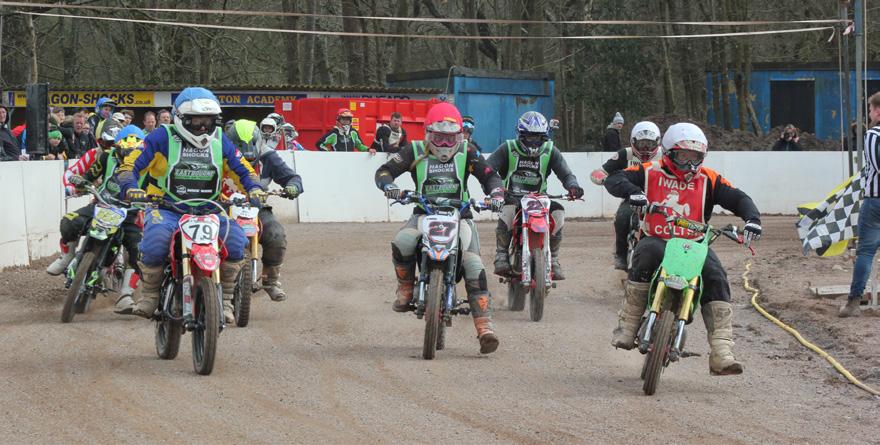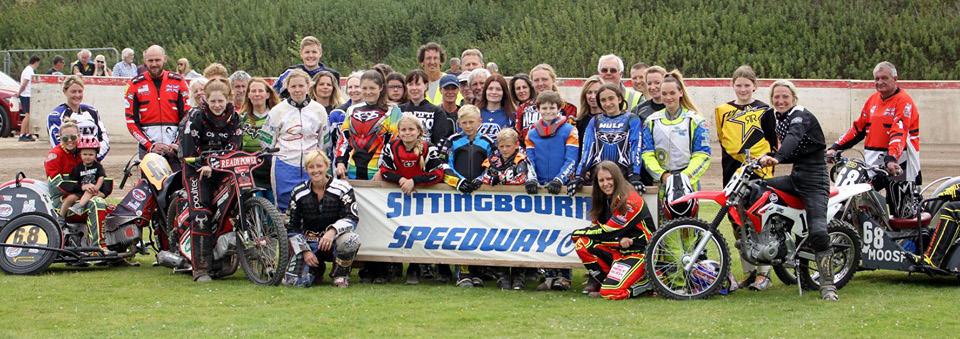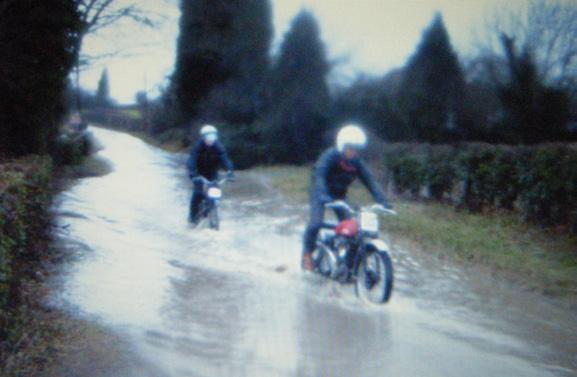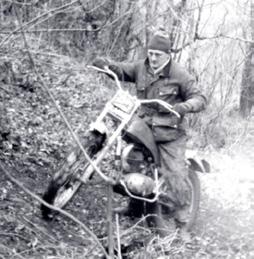
11 minute read
OWLS Motor Club: A Summary of the Club's History
By Kevin Storey Membership Secretary OWLS Motor Club
Part 1 1926 to 1956
Advertisement
On Thursday the 2nd December 1926 a group of about fourteen motorcyclists gathered in The Kings Arms Hotel, Westerham, where they agreed to form a club. Initially it was to be called the Oxted and Westerham Motorcycle and Light Car Club but within a few weeks it had grown to be the Oxted, Westerham, Limpsfield & District Motorcycle and Light Car Club, which became known as the OWLs. The club annual subscription was set at 5 Shillings.
One of the group, a Mr W Hempshall who was a Scout for the RAC, is credited with being mainly responsible for the formation of the club. In order to get things moving he became the Club's first Secretary, but after two months he handed over to Mr F R Mowforth, and was unanimously appointed an honorary member of the club.
Another Founder member was Mr C Sharp from Brasted, who on 1st January 1927 successfully completed the Motor Cycling Club's Exeter Trial on a Brough Superior outfit. The first event organised by the Club was a dance to raise funds, over 200 turned up, making it a success, both socially and financially. In the first six months the club organised Social Runs around Kent, Reliability Trials, Pillion Trials, Motorcycle Football matches, a Hill Climb and a Paper Chase. There was also a trip to Dymchurch where racing on the sands was undertaken.
In May 1927 the club's first motorcycle football match took place at Westerham, six club members from Westerham took on six members from Oxted. 300 people turned out to watch. The result was Westerham 2, Oxted 0. A rematch was arranged for a couple of weeks later at Oxted, but this time there were 1,500 spectators. The result was Westerham 3, Oxted 1. In the 1930's motorcycle football took off in a big way both in this country and in France, the Owls were in at the very beginning.
By July 1927 club membership stood at a healthy 50 plus.
In the growing up years 1926- 30 the club grew quickly and grass track meetings were held at Marlpit Hill and Yards Hill. A scramble held at Pilgrims Farm, Titsey was very successful and had a write up in "The Motor Cycle" of a whole page. Around 1930 Sevenoaks joined the club and the name changed to the OWLS Motor Club.
The club became affiliated to the A.C.U. and began holding competitions. In the very early days only closed events for club members were held. The Whitley Mill Trial started its long run and in 1931 Grass Track races were held at Crowhurst. At these meetings and others at Layhams Farm and Readercott (Hill Climb) the OWLS riders almost swept the board. Stars of the early days were Vic Bryant, Jock Preece and Angus Herbert. The machines of the day were as varied as Heinz soups. Nortons, Velocettes, Royal Enfields, JAPs, Bakers, Excelsiors, Zeniths, Rudges, and very many other makes.
Also in 1931 the first lady member was enrolled, a Miss Walker by name. Eric Oliver joined the ranks and started on his long road to a World Championship. On his way up, he was one of the stars of Brands Hatch grass track, Sidecar and Solo. Later he took up road racing with a sidecar outfit. We should be very proud that Eric started his career riding for the Owls.
1932 was destined to become one of the most memorable years in the history of the club. A fantastic amount of work and activity within the club itself. The birth of Brands Hatch on Easter Monday was the start of a fabulous era in motor cycling history. A number of clubs had been approached to start grass track racing at this venue , but only three survived, Bermondsey, Sidcup and the OWLS to form the Brands Hatch Combine.
1933 Highlights included a record crowd at Brands of 2,350 - a talk by Graham Walker at the Clubroom. The social side ran a dance in aid of the unemployed during these hard times and once again it proved a tremendous success.
In 1934 Brands Hatch had 31,000 new turves laid down on the track and a new attendance record at Easter of 4,627. The Social side kept going wonderfully well with numerous dances at the Club Hall and Barn Theatre, Oxted.
In 1936 membership dropped to 83.
A Star Group for trials was set up and proved very successful. Seven clubs formed this alliance namely Carshalton, South Reading, Sunbeam, Streatham, Wickham, Witley and the OWLS, scrambles were also run by the group. The Whitley Mill Trial continued to fill the most important place in the trials season. 134 entries were received for this event. Social events were numerous but not very well attended. There were Darts Matches, Dances, Scavenger Hunts and Club Runs.
In 1937 Reg Wingett joined the Club and very soon afterwards started his very long run as Secretary. Major Branson became the Club President but the membership slipped even further down to 76. On the Competition side the Star Group did not live long as far as the OWLS were concerned. The Club joined the North Kent Trials Combine. Brands Hatch had a record season but rumours of the end of racing at the track were continually floating around. They even talked of laying a road surface for road racing early in 1937.
1938 saw Brands Hatch still going strong with every meeting over-subscribed as far as riders were concerned. This seems the best time to look back on Brands Hatch pre-war. Since the first meeting in 1932 the Grass Track had grown in popularity and the name Brands Hatch became known all over the country as the Grass Track. First class riders who are still remembered now: Jock West, Wally Lock, Les Schwieso, Eric Oliver, Angus Herbert, Harry Ditchburn, Cyril Clisby, Jack Surtees, W.Hallet. What memories these names bring back, no certain winners in any race in those days. Machines were rigid but speeds were incredible. Silver Stars were awarded for riders who had won a race at over 50mph. Ken Goffe that wonderful rider from Blackmore Vale created a stir and started a new era in Grass Track racing. He broke the lap record at 53.21 mph in May 1938 riding a Rudge semi speedway style and his type of riding is still with us today (written in 1961). The team races with Blackmore Vale were run with very keen rivalry. In races of the pre-war period many different makes of machines lined up at the starts. OK, Ariel, Velocette, Norton, Rudge, AJS, Douglas, J.A.P, Excelsior, Coventry Eagle and others. The programme at these meetings usually consisted of 250, 350, 650, Sidecar Scratch, Sidecar handicap, Combine Handicap and Grand Prix Handicap races.
In 1939 only about half the members paid their subscriptions. A very successful Gymkhana was held by the club at Ightham in aid of the Nursing Association. It consisted of a football Match, Obstacle Race, Trick Riding, Long Jump, Tilt the Bucket, Musical Chairs, Mechanics Race and Pram Race, Ride through Fire, Barrell race, Hoop Race and finally Egg & Spoon race.
Also in 1939 Grass Track racing at Layhams Farm and Brands Hatch continued, but with the threat of war things began to dwindle out until that fateful day on September 3rd. The Committee held a meeting on that day and wound up the club for the duration. They offered the clubroom at the Kings Arms, Westerham for War Work, and a letter was circulated to all members suspending all activities. The Committee expressed its hope that all members would do their best for the country and hoped to be meeting again in the near future.
The near future turned out to be June 24th 1945 when a meeting held at the White Hart, Sevenoaks decided to re-start the club on a temporary basis. Later in the year the club really got going once again with Reg Wingett Secretary, E Huntley Chairman and Major Branson as President, in fact no changes. In 1946 things happened pretty rapidly. Racing resumed at Brands Hatch and crowds of up to 15,000 attended. The Whitley Mill Trial reappeared this year to start the trials side going once again. A reciprocal membership system was operated with Watford & District Club and about this time serious thought was given to the creation of a clubroom – A dream soon to come true.
In 1947 membership of the club now exceeded 270 and still rising with the post war boom. So much so that this paragraph appeared in the minutes at a committee meeting. "Owing to the large membership it has been decided to start limitation of members and in future application from members of other clubs in the N.K.T.C. will not be accepted. Members should also make sure that any person wishing to join the club is really interested in club life". The site for the clubroom was between a piece of land near Bat & Ball and another near to the "Woodman", Ide Hill. In June however the Otford Road site was finally settled. The Whitley Mill Trial had 70 starters and was blessed with heavy snow, a glorious luxury.
A Gymkhana on August Bank Holiday raised £300 for charity, but trouble was brewing at Brands Hatch. The new management could not come to any agreement with the Combine and this was destined to be the last season at Brands run by the Combine Clubs. This was one of the biggest blows to the Owls and probably one of the biggest mistakes. When one thinks of the clubs who now undertake the racing at Brands and the way they have grown and prospered a little patience could have been rewarded. Post war Brands under the Combine had produced really wonderful racing and new stars. Riders like Johnny Lockett, A O Roger, C Beischer, J Colver, P Seymour, Don Slate, W J Keel, Ernie Lyons, and many more together with nearly all the pre-war stars still cracking. Speeds increased and machines improved with springing fore and aft. One strange fact in 1947 was that Bill Boddice rode at Brands on the grass under the "Owls" banner. He was a member for one year only alas.
During this year the basic petrol ration was cut and the social events suffered to a great extent.
1948 saw the Clubroom dream come true. Opened on June 18th it was a great day for the OWLS. It was opened by R J Holloway the President and many well known personalities attended including Prof. A M Low representing the A.C.U.
During this year the Club entered Angus Herbert in the Clubman's T.T. event. He finished 13th riding a Matchless in the Junior Race.
Lew Cook became Chairman, a position he held until 1960, and a reciprocal scheme with the Southend Club was started. Grass Track meetings were held at East Grinstead and Tandridge, and the racing side began to make progress once again after the loss of Brands Hatch.
The early fifties were not the greatest days for the club with members dropping out all the time. Support for social events and trials was very poor, so much that at one time it was almost decided to ban "Owls" riders from riding in the Club Trials.
1950 saw the return of scrambles for the club with a meeting at Cross-in-Hand. Scrambling was about this time becoming popular but I must admit I never dreamed that it would reach the heights and popularity it has today (written in 1961). The scrambles continued in 1951 and a grass track held at the Weald.
About this time Eric Oliver was approached to accept the office of Vice-President but declined owing to business commitments.
In 1952 Angus Herbert became the club's President, but it was a very poor year except for an occasional bright spot in the racing side. For the first and I imagine the only time a sidecar team was entered at Brands Hatch consisting of Peter Woollett, Hilt Woodrow and G Butler. Hilt Woodrow during this year took over as racing Secretary, and the "Owls" once again had a rider in the Clubman's T.T. This time it was Bob Ritchie, who finished 9th in the Junior riding his Norton.
Apart from the social side 1953 was a much better year and made up for the past few lean years. Scrambles at Bombers Lane, Grass Track at Chipstead. The beginning of the Association with East Grinstead club for racing at Dormansland. All this brought the best financial report since the war. There was even talk of a road race meeting at Crystal Palace run by the old Combine Clubs but this did not materialise.
In 1954 we had racing at Dormansland and some "Owls" names began to hit the headlines. Hilt Woodrow was S.E. Centre Grass Track Sidecar Champion and Johnny Giles came to the fore in the Trials world. Membership at this time stood at 160 but with the exception of Film Shows the social side was very inactive. Porky Warren took over the social side in an effort to liven things up.
In 1955 the Whitley Mill Trial had 176 entries and continued its long reputation as a truly tough and extremely popular trial. The Scrambles continued at Bombers Lane despite local opposition and numerous attempts to stop meetings. Hilt Woodrow was Sidecar Champion once again and Peter Woollett, Alan Trow and Johnny Giles were all very successful.
For 1956 Dr MacArthur became President and Reg Wingett took over the Owler.
The social side during this year picked up tremendously and support for club nights and events showed a great change for the better.
With grateful thanks to Jim Sharp for his 1961 history of the club.







